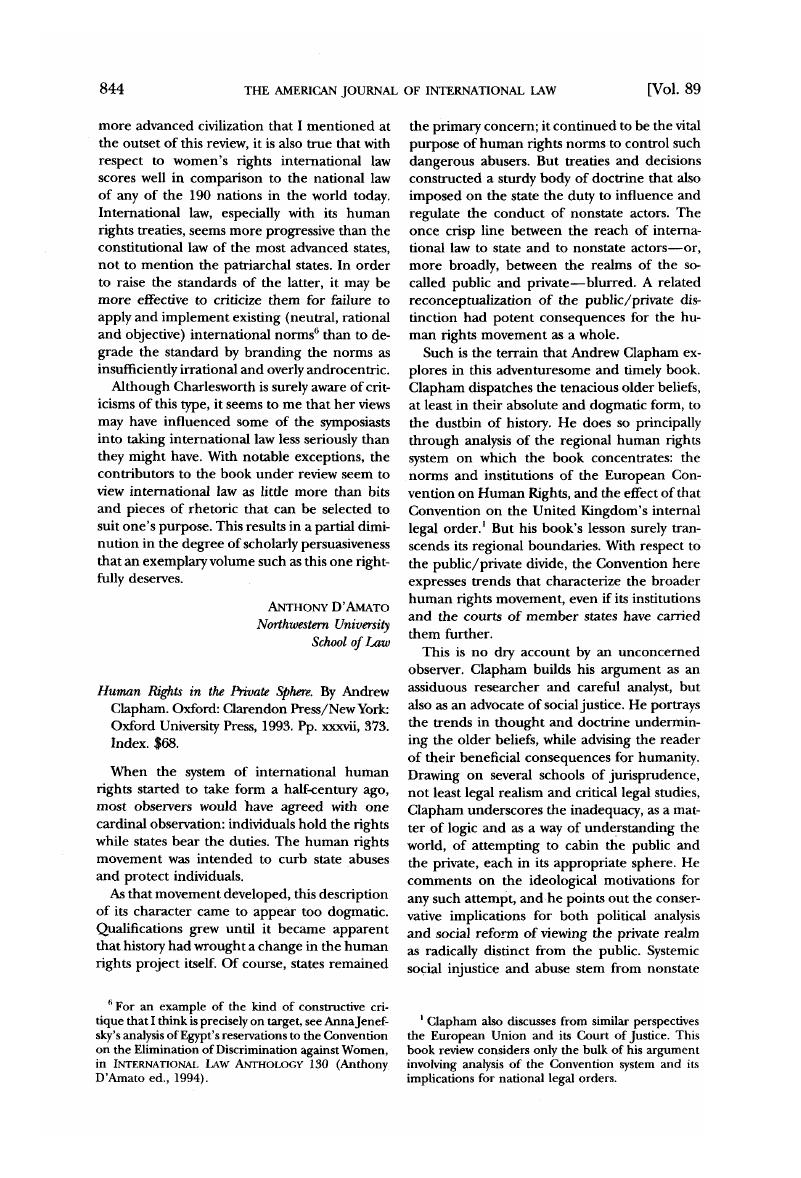No CrossRef data available.
Article contents
Human Rights in the Private Sphere. By Andrew Clapham. Oxford: Clarendon Press/New York: Oxford University Press, 1993. Pp. xxxvii, 373. Index. $68.
Published online by Cambridge University Press: 27 February 2017
Abstract

- Type
- Book Reviews and Notes
- Information
- Copyright
- Copyright © American Society of International Law 1996
References
1 Clapham also discusses from similar perspectives the European Union and its Court of Justice. This book review considers only the bulk of his argument involving analysis of the Convention system and its implications for national legal orders.
2 334 U.S. 1 (1948).
3 91 Eur. Ct. H.R. (ser. A) (1985).
4 32 Eur. Ct. H.R. (ser. A) (1979).
5 Reprinted in 9 HUM. RTS. L.J. 212 (1988).
6 The language of some of the human rights treaties is less than lucid on these issues. The American Convention on Human Rights, for example, provides in Article 1 that state parties must “ensure to all persons” the “free and full exercise” of the declared rights. Article 25 gives each person the right to “effective recourse to a competent court for protection against acts that violate his fundamental rights recognized” by internal statutory or constitutional law or by the Convention, “even though such violation may have been committed by persons acting in the course of their official duties.”
7 My sequence of types of states’ duties (respect, protect/prevent, provide, promote) is derived from an article by G. J. H. van Hoof that uses somewhat different terms in a different context. See The Legal Nature of Economic, Social and Cultural Rights: A Rebuttal of Some Traditional Views, in THE RIGHT TO FOOD 97 (P. Alston & K. Tomasevski eds., 1984).


